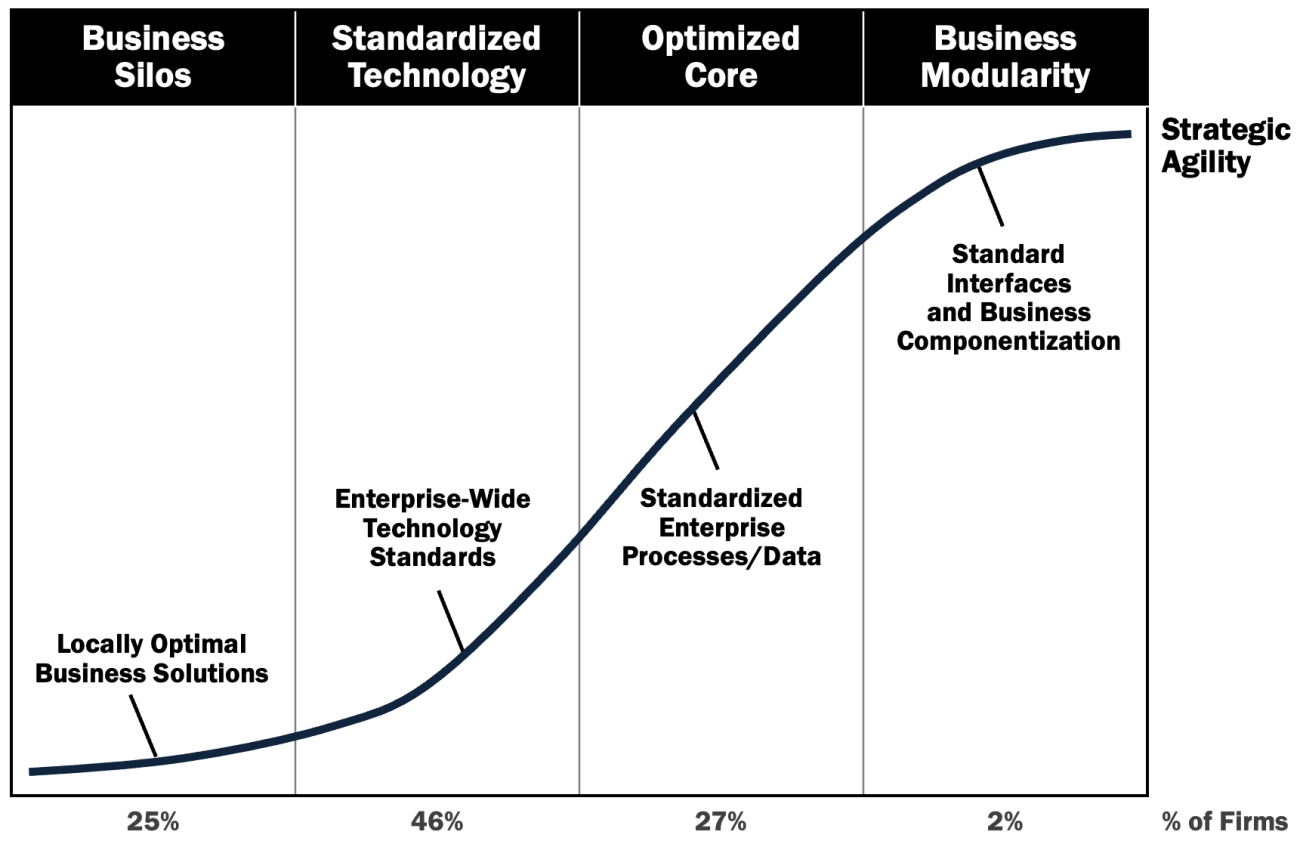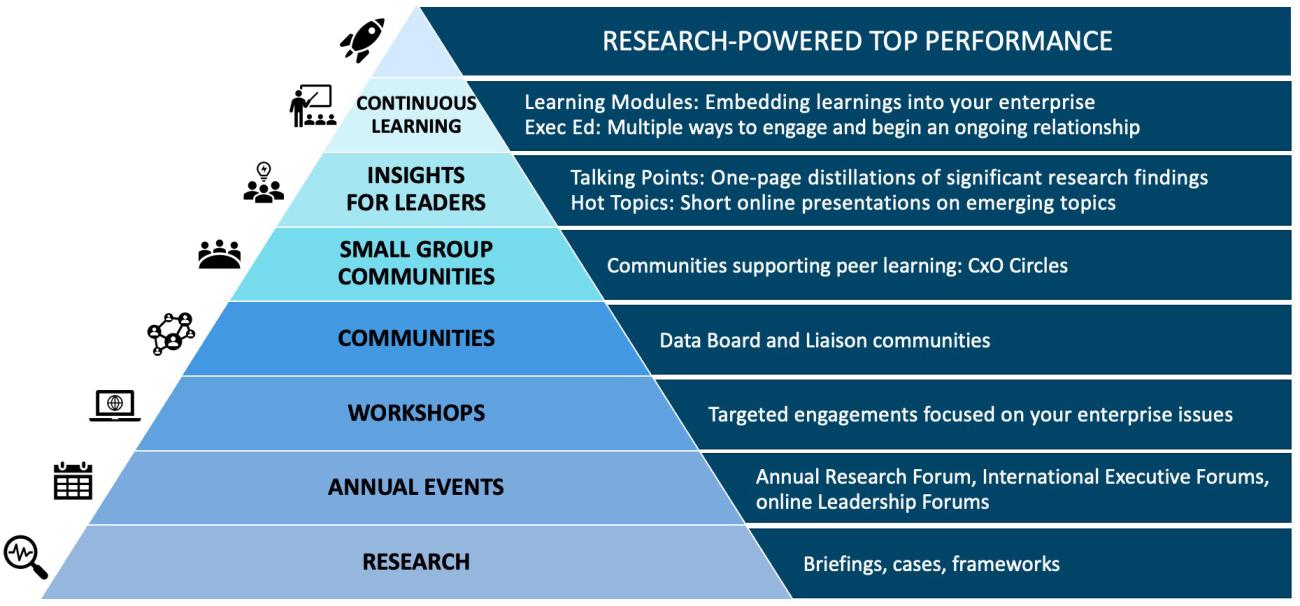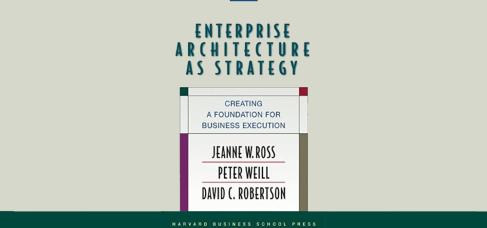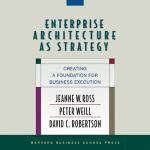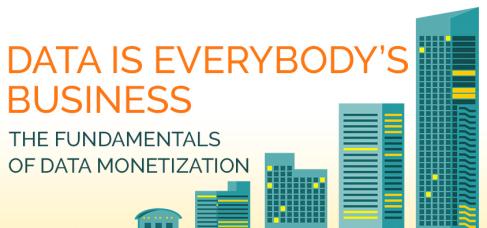Close Collaboration with Industry: CISR maintains strong relationships with over 100 global organizations,[foot]In 2024, MIT CISR is supported by 70 member organizations and maintains research relationships with several additional organizations.[/foot] including many Fortune 500 companies. This collaboration ensures that the research is grounded in real-world challenges and relevant to practitioners.
Often MIT CISR member organizations are what we fondly call “big, old companies.”[foot]For a current list of MIT CISR member organizations, see Our Consortium, MIT CISR, https://cisr.mit.edu/content/mit-cisr-members.[/foot] Many members share a history of success—success that has often relied on complex legacy systems we describe as “silos and spaghetti.”[foot]“Silos and spaghetti” describes the state when an organization has a complex landscape of product silos and fragmented business processes, systems, and data. P. Weill and J. W. Ross, “IT Savvy: Making IT a Strategic Asset and Outperforming Competitors,” MIT CISR Research Briefing, Vol. IX, No. 9a, September 2009, https://cisr.mit.edu/publication/2009_0901_ITsavvy_WeillRoss.[/foot] Many MIT CISR research projects have framed a compelling vision of what IT, digital, and data systems should look like in a modern global organization.
MIT CISR interacts with members in several ways. We hold in-person and online events to report research findings, building a vibrant, sharing community of company leaders. We develop and deliver many custom workshops with member organizations that combine the deep expertise of the organization’s leadership team with current MIT CISR research on top performers. Barb Wixom leads the MIT CISR Data Research Advisory Board, a forum founded in 2015, that brings together data and analytics leaders from MIT CISR member companies to engage in research, directly shaping insights.[foot]See Data Research Advisory Board, MIT CISR, https://cisr.mit.edu/content/data-board.[/foot]
Kalev Ruberg, formerly the CIO and chief innovation officer at Teck Resources, explained what distinguishes MIT CISR: “MIT CISR doesn’t just report conversations, but instead proposes hypotheses and tests the support of those hypotheses with industry data. In their events they include presentations from leaders in digital transformation efforts across business and industry, and Sloan School and MIT lecturers are only part of a unique learning experience. The cadre of professionals in the room sharing their experiences and knowledge illuminates the discussion and creates lasting friendships.”
Christina Soh, former dean of the College of Business at Nanyang Business School, described the influence of MIT CISR: “We learned much from our interactions with the CISR team about engaging with industry partners, and were also their Asian partner for a number of large-scale international projects.”
Educational Impact: MIT CISR contributes to education by developing teaching materials, case studies, and executive education programs.
Jack Rockart began the MIT CISR tradition of teaching in MIT Sloan degreed and executive education programs. Peter Weill and Jeanne Ross, the former MIT CISR director and principal research scientist, continued this tradition, both teaching very popular MBA classes and developing executive education programs. The relationship with MIT Sloan Executive Education is deep, and many MIT CISR researchers work on executive programs for top management teams such as past custom programs for Commonwealth Bank of Australia (CBA), ANZ, and Standard Bank.
Michael Harte, a former C-level executive at Commonwealth Bank of Australia (CBA), Citi, PNC, Barclays, and Santander, described the influence of MIT CISR executive education: “In the early stages of a multiyear and multibillion-dollar replatforming [at CBA], we experienced the usual reticence and reluctance to change. By the sixth year [of the project] we had a very excited CBA board visit MIT to see exactly what the top team had experienced there. They all learned the importance of governance—not just leadership, [but] the criticality of business model choices and disciplined execution, and the vital importance of architecture decisions to successful execution, to underpin delivery and quantifiable risk and return in capturing value. An example that incorporated all of this was the completion of a full replatforming to support customer satisfaction and operational leverage. After the program and the replatforming, CBA was number one in customer satisfaction—measured by Roy Morgan Australia—and had the lowest cost-to-income ratio (approximately 30 percent) in the global commercial banking sector.”
Global Reach and Influence: The center’s insights are disseminated globally through reports, briefings, webinars, and its website, making its research accessible to a wide audience. CISR’s research has influenced not only academic thinking but also the strategic decisions of organizations around the world.
In the early 2000’s, MIT CISR had a goal to globalize its consortium and went from a very US-centric membership model to having about 50 percent of member organizations headquartered outside of the US.
On what he has learned from MIT CISR, Sim Tshabalala, CEO of Standard Bank, the largest bank in Africa, remembered, “One of my strongest recollections is of taking what seemed like an audacious ‘bet’ in May 2018: bringing my entire senior team to MIT Sloan for a week for a crash course on what a future-ready business would be like, and how we might start becoming future ready ourselves. [It was] a tall order for a bank that was 156 years old at the time . . . . We returned to Africa with a powerful new sense of direction and a very useful conceptual vocabulary for thinking about what we needed to do. More than six years later, . . . my colleagues and I still think and talk about being future ready in precisely the terms suggested by CISR.”

